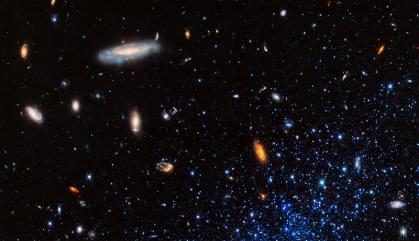Leo P, a small galaxy and a distant neighbor of the Milky Way, is lighting the way for astronomers to better understand star formation and how a galaxy grows.
In a study published in the Astrophysical Journal, a team of researchers led by Kristen McQuinn, a scientist at the Space Telescope Science Institute and an associate professor in the Department of Physics and Astronomy at the Rutgers University-New Brunswick School of Arts and Sciences, has reported finding that Leo P “reignited,” reactivating during a significant period on the timeline of the universe, producing stars when many other small galaxies didn’t.
By studying galaxies early in their formation and in different environments, astronomers said they may gain a deeper understanding of the universe’s origins and the fundamental processes that shape it.
